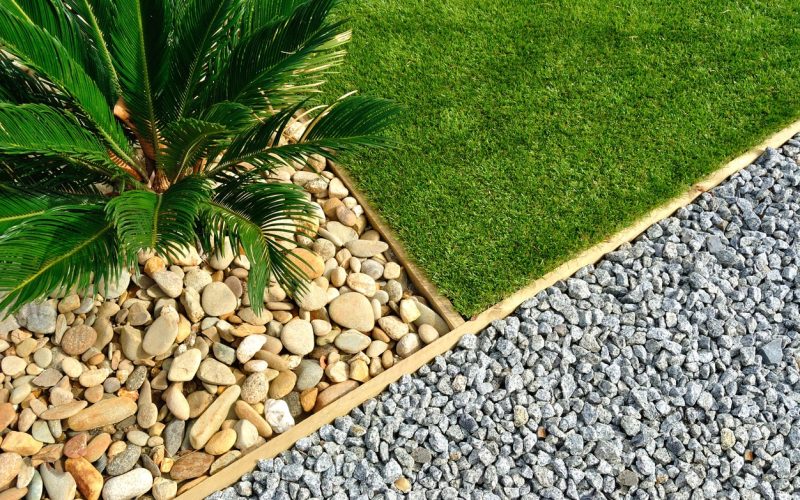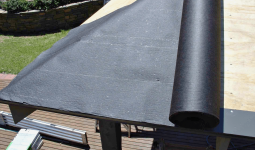This article on the different types of landscape rock is for you if you believe stones can be a fantastic addition to your various landscape makeovers and want to give your outdoor space a special touch.
Landscaping rock (stone) is a well-liked and well-proven hardscape material used to create practical landscape features, define or accent your property, and efficiently manage problem areas.
It is strong, organic, and doesn’t need any upkeep. Perhaps its adaptability is what most impresses me.
It may be difficult for new homeowners to sort through the diversity of this versatility, though Small landscaping rock is required for some projects, medium-sized stones for others, and boulders for others.
Various products are suited to diverse needs, even within those broad categories. Because of this, we’ll go over eight varieties of landscaping rock below, along with the factors you should consider when selecting one for your garden.
Furthermore, you can use them to decorate a fountain, make a path, or cover a wall, among other things. There are countless options!
Selecting the best landscaping rocks for your yard or garden is crucial because they set the tone.
Here are the different landscaping rocks you can use in your home.
1. Pea Gravel
Pea gravel is one of the different types of landscaping rock made up of rocks that are, you guessed it, about the size of a pea each.
Also, pea gravel is a type of landscaping rock that appeals to the touch and the eye because the stones used to make it typically have a smooth finish.
Pea gravel is a popular landscape choice due to its aesthetic, tactile appeal, and affordability.
Furthermore, pea gravel is popular as a landscaping rock but has other uses.
These smaller rocks are frequently used in high-foot-traffic areas such as walkways, dog runs, playgrounds, and patios.
Also, pea gravel is helpful for use in areas that require drainage, such as underground projects.
2. River Rock
Another class of smooth rock is river rock. You can replace mulch in landscaping with durable river rock.
These rocks are frequently used to fill in the spaces between the stepping stones or as various decorative rock drainage options for areas that need them because of their attractive appearance as natural stones.
Due to its smooth surface, this type of landscaping rock is perfect for a backyard water feature.
Even if you don’t have a water feature in your outdoor area or live in a dry climate, decorative river rocks can still have the same calming effect as water features in your front or backyard.
Although these rocks come in sizes up to three inches, it is generally agreed that river rocks with a width of one inch are ideal for a size.
On the other hand, larger rocks leave gaps between them, and these gaps, particularly near a water feature, can draw animals like snakes.
3. Flagstone
The sedimentary rock known as flagstones is divided into layers. In rock landscaping, they are typically used as paver stones in flatter areas like paths or driveways.
Additionally, flagstones can be used to create rock retaining walls, as stepping stones, garden beds, landscape edging, or even as a fire pit surround.
Sandstone and limestone are the two least expensive types of flagstones, but varieties like bluestone and quartzite are also common in rock landscaping.
Both of these latter landscaping stones are exquisite examples of decorative stones.
Furthermore, sand can fill them in, but pea gravel or other smaller rocks are usually used to surround flagstone stepping stones and paths.
4. Brick Chips
Bricks crushed, screened, and sized for rock landscaping projects are used to create brick chips, a type of landscape rock.
They are frequently used for walking paths, baseball warning tracks, planting beds, and trails.
Brick chips are beneficial for preserving soil moisture and soil temperatures.
These two factors can support healthy plant growth. Brick chips don’t rot, fade, or become worn out, and don’t draw insects.
Because of this, using them as ground cover in a flower bed is very appealing.
5. Decomposed Granite
Decomposed granite has been so thoroughly worn down that only tiny and delicate pieces remain.
Also, it comes in various colors and is perfect for DIY pavements. You can easily purchase 20 pounds of decomposed granite for under $30, which is also cheap.
It might make an excellent foundation for your brand-new rock garden. This is one of the different types of landscape rock.
6. Crushed Granite
When it comes to crushed granite, the clue is in the name. These little earthy-colored rocks are perfect for your yard because they are loose and won’t cause puddles.
People like to use crushed granite along the edges of their pathways to make a nice transition between the path and the vegetation because it looks so natural.
Crushed granite is more expensive than some of these alternatives, but if properly stabilized and ensured good drainage, it can last a very long time.
7. Lava Rock
Volcanic rock is another name for lava rocks. Usually, rich colors like burnt red are available in lava rock gravel.
Lava rocks can also be used as rock mulch because they don’t decompose and don’t need to be replaced as frequently as mulch.
Due to their porosity, lava rocks are also helpful in drainage areas.
This volcanic rock has the potential to inhibit weed growth. To help stop weed growth in your garden, spread a layer of landscape fabric underneath a spread of lava rock.
Also, you must be careful not to allow soil between the material and the volcanic rock layer to prevent weeds from growing between the lava rocks.
Furthermore, This entails checking the condition of the landscape fabric layer. If there is soil between these layers, weeds may be able to germinate and grow there.
8. Marble Rock
Marble probably also conjures up images of opulence. This exquisite landscape material adds a touch of luxury to any room it is used in.
The price per foot of crushed marble can range from $0.80 to $1.50.
Marble stone, being made from rock with a high pH, will gradually raise the pH of the soil around it.
Some plants, like hydrangea flowers, whose colors vary depending on the acidity of the soil they grow, may benefit from this.
However, some plants prefer more acidic soil, so surrounding a plant or flower bed with marble gravel isn’t the best idea if those plants need acidic soil to thrive. This is one of the different types of landscape rock.
9. Boulders
The use of boulders in landscaping is extensive. They look great and/or can be used as retaining walls.
But you’ll probably need to hire a service to find, deliver, and place them.
Whether stacked or scattered throughout a large garden, placed around the base of a tree, or in any other imaginative arrangement, boulders add texture and draw the eye to any yard.
10. Black Polished Pebbles
Highly ornamental black polished pebbles are widely accessible at home improvement stores.
You can purchase them by bag here, instead of crushed stone, which is a benefit.
This gives you more control as a do-it-yourselfer. However, they are more expensive than comparable natural beach pebbles.
If you don’t need many of them, this also helps keep the cost down. To create contrast, mix white marble pebbles with your black polished pebbles.
Other names include polished black river rock and polished black beach pebbles.
Quartzite stones that have been tumble-polished to produce black polished pebbles have a shiny surface. This is one of the different types of landscape rock.
11. Cobblestone
For some people, the traditional charm of cobblestones makes them impossible to resist. Cobblestones, or “Belgian blocks,” are quarry products made from rectangularly shaped granite, basalt, or limestone.
They are frequently used in driveway aprons. This is especially popular with people who like the appearance of cobblestone pavers but can’t afford to build an entire cobblestone driveway.
You can purchase cobblestones from a stone yard for DIY projects. Cobblestones are the most durable pavers, but they are expensive and have a rough surface.
They cost $40 to $70 per square foot, and their exteriors are uneven enough to make snow removal challenging.
12. Fieldstone
Like river rocks, “fieldstone” refers to the region where you first found this type of rock rather than a geological category.
In rocky terrain, farmers dealt with many stones as they plowed their fields.
They would pile them up far from the areas where they were cultivating crops to get them out of the way.
They might take rocks out of the pile as needed to use as “fieldstone” to construct a wall. One of the earliest applications of stone is the stone wall.
There are several types of stone walls. The difference between mortared and mortarless walls is the most fundamental.
However, various kinds of rocks can also be employed. For mortarless walls, flat ones are ideal (and also work well in stepping-stone paths).
If your fieldstone is rounded, the pieces may need mortar to be held together. Stone retaining walls are a separate sub-class with unique requirements that sometimes necessitate professional assistance.
Furthermore, you can order fieldstone from a stone yard or a home improvement store, but delivery is almost certainly required.
If you settle for the typical local fieldstone in your area, it’s heavy but not overly expensive. This is one of the different types of landscape rock.
There is no wrong choice when it comes to using rocks for landscaping. Each of the rock types mentioned above has distinct aesthetic and functional benefits.
It is entirely up to you, your needs, and your preferences for which kind of rock you use for landscaping. There will always be rocks for landscaping.
Whether you need them for a driveway, a rock garden, rock mulch, a water feature, edging for a flower bed, or simply as ground cover.








